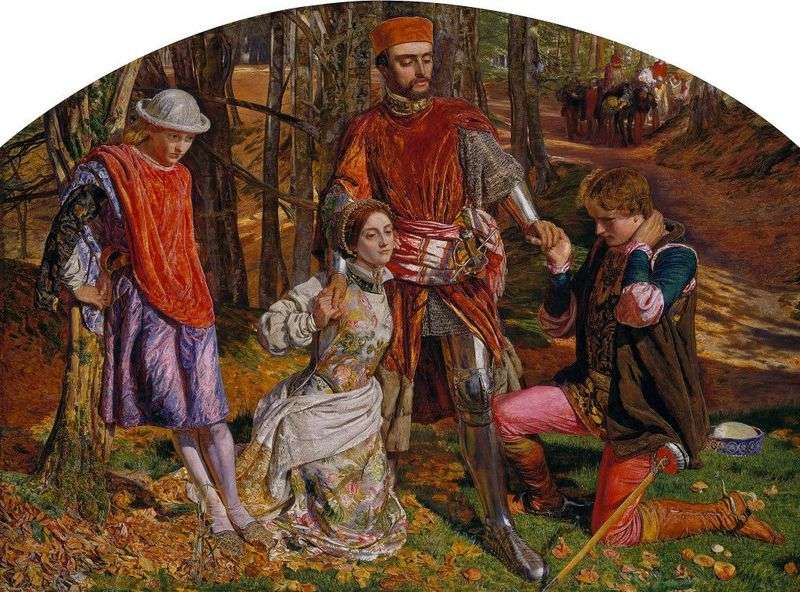
“Valentine…” continues the avant-garde experiments of Hunt in the field of perception and form. Hunt was carried away by them in the painting “The Seven Oaks” in Kent, where he went in the second week of October 1850, together with FJ Stevens, DG Rossetti and Annie Miller to paint the autumn landscape – first for a small sketch, then for a large picture oil. He transferred the composition from the board to the canvas in Noole Park when he returned to London in mid-November. Figures were written in the studio in Chelsea in the winter.
The Robertson company, which supplied the artists with the materials, primed the canvas with a white primer, after which Hunt applied two additional layers of white paint mixed with varnish to obtain a cleaner background, and as a result reached an impeccable whiteness. The Pre-Raphaelite method of preserving color luminosity and brightness intensification consisted in the fact that light was reflected in the thin layers of the pigment. Hunt sketched the composition with a pencil over the primer, and then, before taking up the brush, applied a thin layer of white ink over the outline with a spatula, so that the pencil lines remained visible. It is akin to the intonaco in fresco painting – a thin layer of moist plaster, under which the contours of the future drawing are displayed in advance. Some fragments of paintings by Hunt and Milles could also be made on a damp white background; This aspect of their technique has not yet been fully investigated. In the picture, faces and hands appear written on the wet upper layer, which gives them extra brightness, but this is indistinguishable to the naked eye. These methods are part of the progressive methods of pre-Raphaelite art.
Inspired by the exquisite depth of tone and elegant light effects in Van Aren’s Portrait of the Arnolfini Couples, armed with information about the creation of colorful frescos and familiar with the techniques of working with tempera and gilding in easel painting since the early Italian Renaissance, Hunt and Milles experimented with modern materials – litters, paints in tubes, tassels and a variety of varnishes. The next step was to expand the work in the open air, which Pre-Raphaelites did in the summer of 1851.
The first picture of Hunt written on Shakespeare’s plot – “Valentine saving Sylvia from Proteus” – also reflected the interest of Pre-Raphaelites to national literature and the Italian Middle Ages or the early Renaissance. Particularly attracted to the artists themes of love conflict and fidelity in love – in the picture they are embodied in motionless figures in the foreground. Valentin saved his beloved Sylvia from the harassment of the best friend – now pacified Proteus, who submissively kneels on the right.
The grass under the feet is crumpled and broken, testifying to the recent struggle. On the left, Julia, in the suit of the page, looks fascinated at Proteus, the object of her passion, while at the same time she absent-mindedly turns on the right hand the ring Proteus presented to her as a token of a love vow. Valentine promises forgiven opponent forgiveness. Proteus expresses shame and remorse, and on the face of Sylvia, who holds Valentine’s hand, while clinging to his thigh, is a numbness and resignation to fate.
Meanwhile, Julia seems to be about to faint – then her secret will be revealed, and Proteus, like the mythological namesake, will once again present her favor to the girl.
Father Silvia, Duke of Milan, appears in the background to take part in the final scene. With the help of elegant gestures, poses and looks, Hunt effectively depicts the whole situation, in imitation of the difficult story of Isabella by Milles. To facilitate the viewer’s understanding, he brings along the frame of the quote from the play – soon it will become a common technique.
Images of weapons, armor and costumes are borrowed from Bonnard’s “Historical Costumes” and Hunt’s own drawings. Particularly noteworthy is the hilt of Proteus’ sword, in the tone of the reddish-pink color of his tights, the dress of Sylvia and the costume of Julia. For Sylvia, Elizabeth Siddahl initially posed, but in his famous first letter to The Times, Reskin reproached the Pre-Raphaelites for the overly banal appearance of the characters, and Hunt obediently redrawn the face of the heroine. Reskin especially praised Hunt for his “inimitable mastery.” Hunt signed the picture: “U. Holman Hunt. 1851. Kent,” alluding to the great significance that he attached to the fact that he wrote it in the open air.
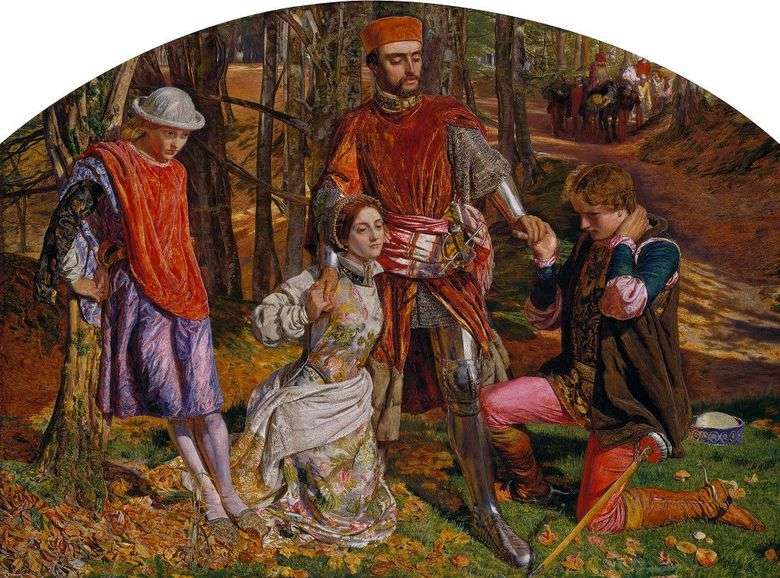 Valentine Salvando a Silvia de Proteus – William Holman Hunt
Valentine Salvando a Silvia de Proteus – William Holman Hunt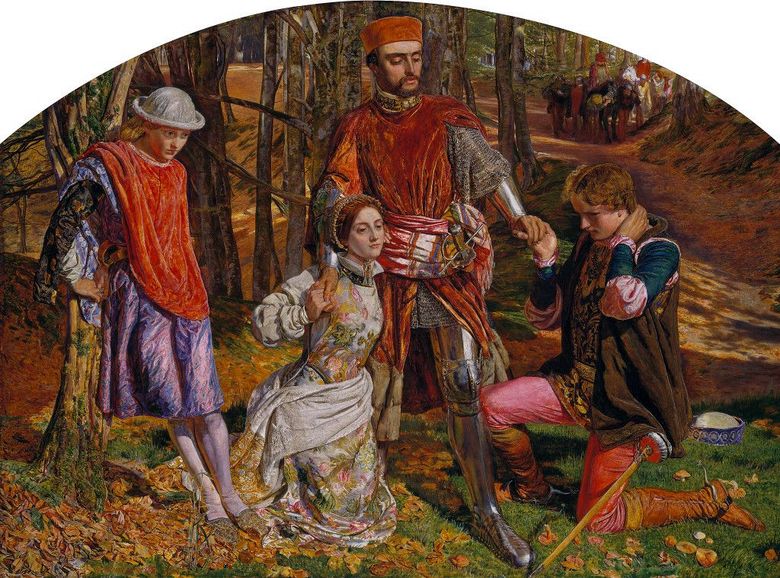 Valentin sauvant Sylvia de Proteus – William Holman Hunt
Valentin sauvant Sylvia de Proteus – William Holman Hunt The Candle of Peace by William Holman Hunt
The Candle of Peace by William Holman Hunt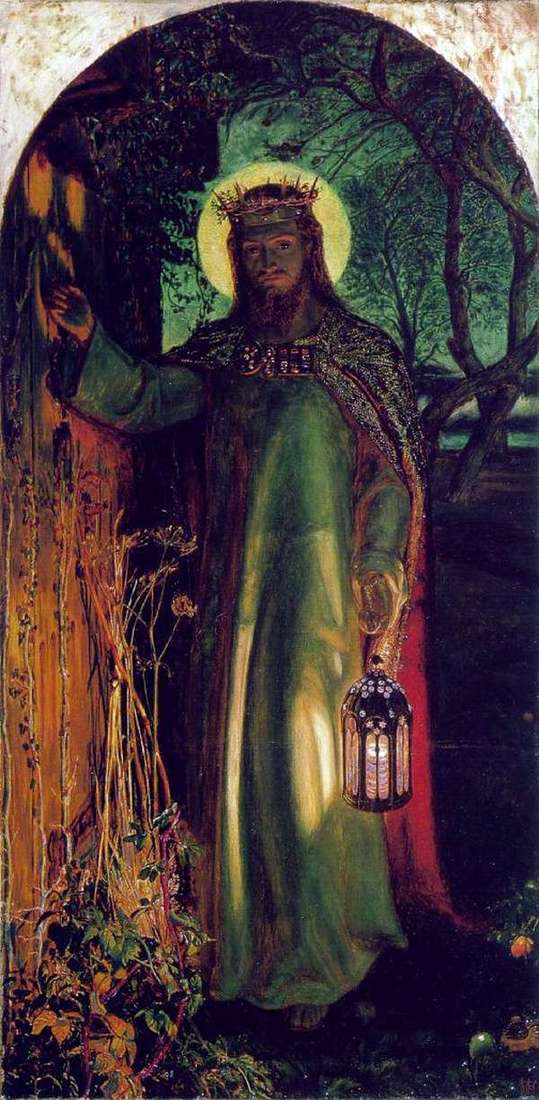 La luz del mundo – William Holman Hunt
La luz del mundo – William Holman Hunt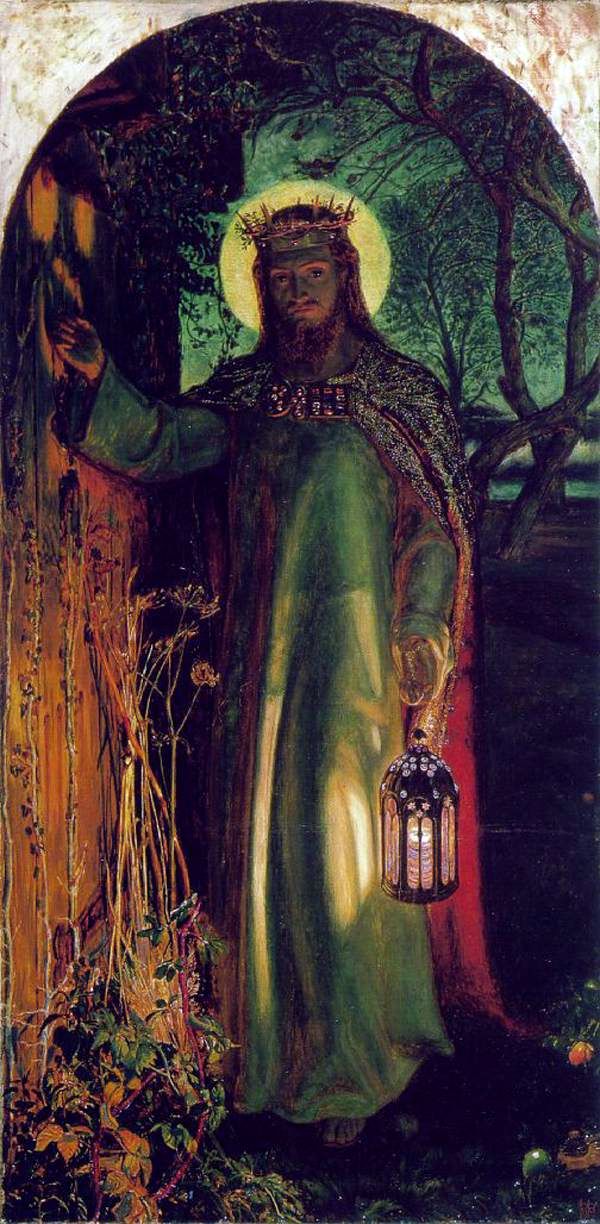 La lumière du monde – William Holman Hunt
La lumière du monde – William Holman Hunt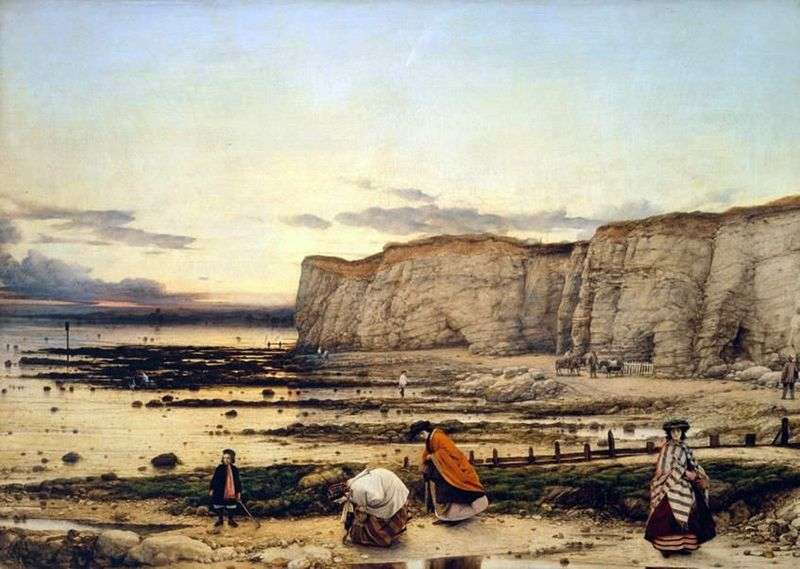 Piguel Bay in Kent by William Dice
Piguel Bay in Kent by William Dice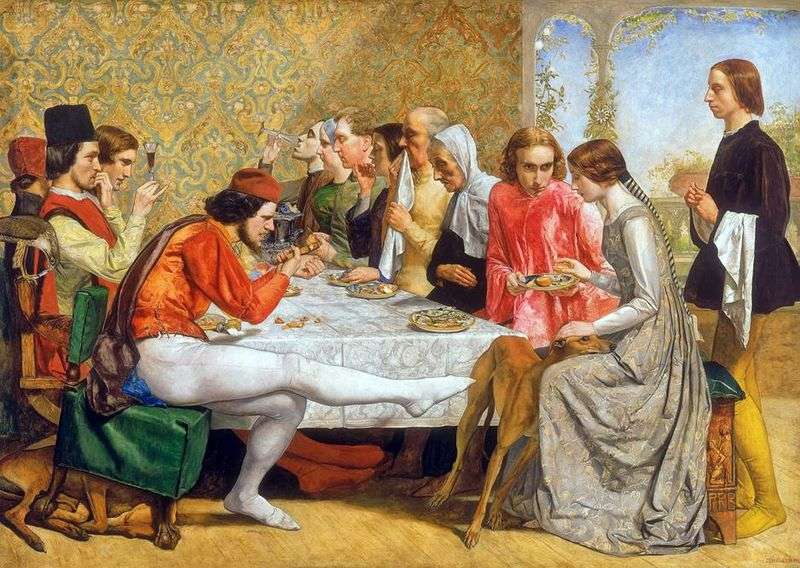 Isabella by John Everett Millais
Isabella by John Everett Millais Rest on the hunt by Jean Antoine Watteau
Rest on the hunt by Jean Antoine Watteau